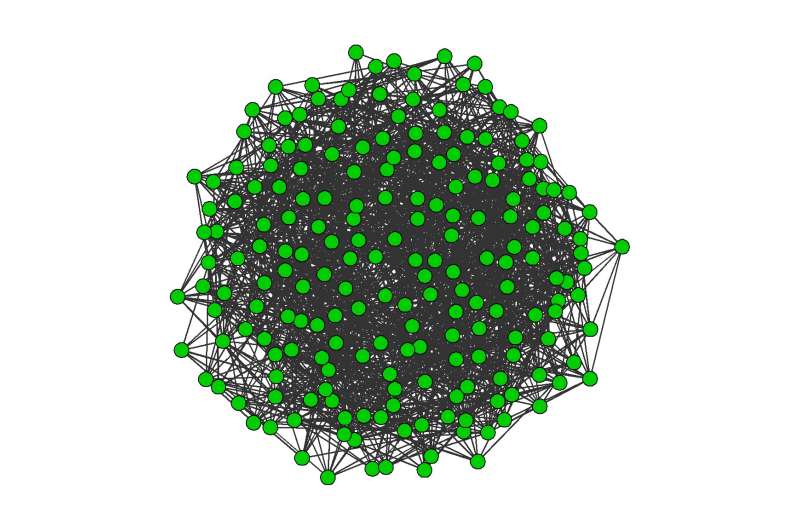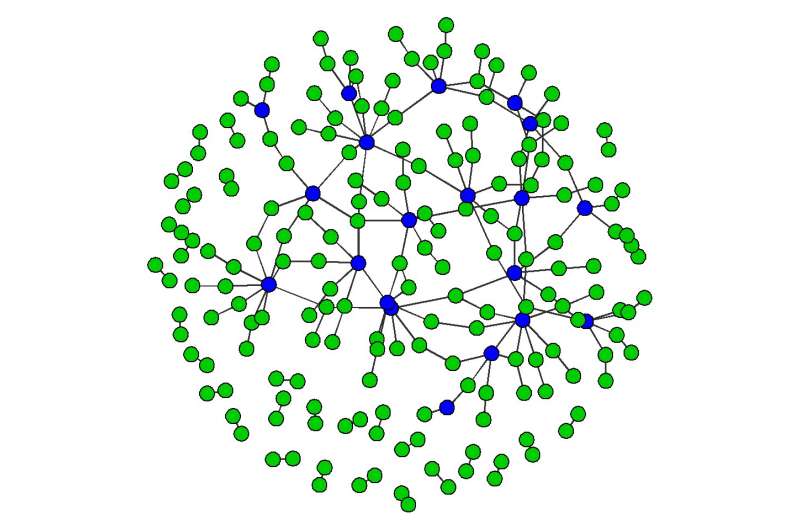Site illustrates adverse impact of visiting 'just one friend' during COVID-19 lockdown

After weeks of social distancing during the COVID-19 pandemic, people of all ages may be asking: What could be the harm of visiting just one friend?
Unfortunately, it could potentially undo the goal of social distancing, which is to give the COVID-19 virus fewer opportunities to spread. According to a website set up by researchers at the University of Washington, easing the social distancing rules so that each household could have contact with just one or two others would reconnect most households in a community, providing conduits through which the COVID-19 virus could spread.
The site—first launched on April 3 and aptly titled "Can't I please just visit one friend?"—is the creation of a team led by Steven Goodreau, a UW professor of anthropology, and Martina Morris, a UW professor emerita of sociology and statistics. Goodreau and Morris are network epidemiologists, studying how social connections influence the spread of infectious agents.
The COVID-19 virus can spread through many types of social interactions—from kissing and hugging to simply being in the same room—which is why health officials recommend rigorous social distancing measures like staying home, washing hands frequently, wearing face masks and keeping 6 feet from others during essential trips to grocery stores, pharmacies and medical appointments.
"There have been lots of discussions and articles about using social distancing to do things like 'flatten the curve,'" said Goodreau. "We wanted to illustrate these principles at a community level, to help people visualize how even seemingly simple connections aren't so simple."

"Can't I please just visit one friend?" starts out by visualizing the effectiveness of these social distancing measures on a hypothetical community of 200 households. The researchers adjust the social connections in this community to demonstrate the effects of social distancing.
Here's the community without social distancing: Each green dot is a household. The gray lines running between households are social connections—specifically the types that could spread the COVID-19 virus, such as close contact among people. In this community, each household has, on average, 15 connections to other households.
With no social distancing, social connections ensure that every household is directly or indirectly connected with every other household in the community, creating one giant cluster.
Here's the community after social distancing: Most households are now isolated. But 10% of households, shown in blue, include a person with an essential job. These households still generate social connections that could potentially spread the COVID-19 virus. But the largest cluster created by these connections encompasses just 26% of households. For the vast majority of households, there is no social connection to potentially expose them to the COVID-19 virus.
Visiting "just one friend"—which seems like it should be harmless—quickly reconnects this community. Here's the situation if each household establishes one social connection with another household: Most households—71%—are now reconnected in one large cluster. A single COVID-19 case in one of these households now has the direct or indirect social connections needed to spread to nearly three-quarters of the families in this community.

"We purposefully keep this quite simple to get the basic idea across to people," said Morris. "It shows why connections can spread more than we realize, and much more than our instincts might tell us."
The team's website shows additional scenarios, which they created using R, a programming language. One simulation shows how an average of two optional social connections per household reconnects more than 90% of households in the community.
Each of these connections is an opportunity for the virus to spread.
"With COVID-19, many types of connections can transmit the virus," said Morris. "What we show is that you don't need superspreaders to create network connectivity for transmission; visiting just one friend is equally effective for connecting a community into one large cluster."
By forgoing that visit with just one friend, people can help their neighbors both nearby and across town, and they will be helped in return, Morris added.



















